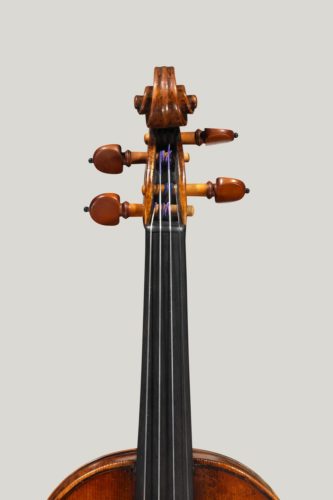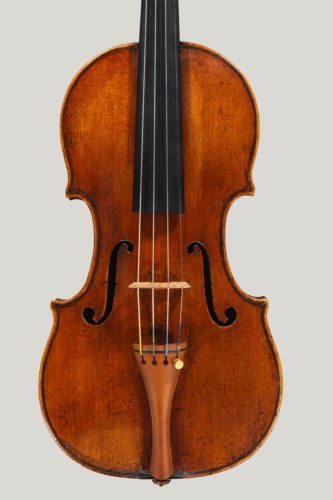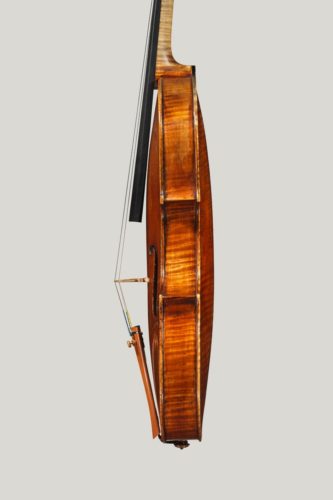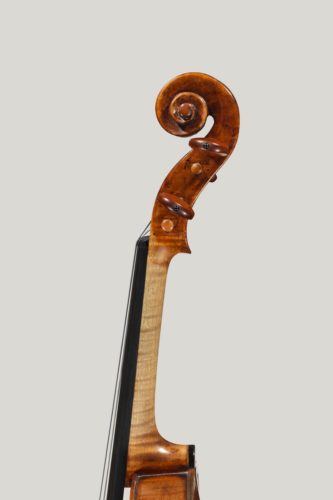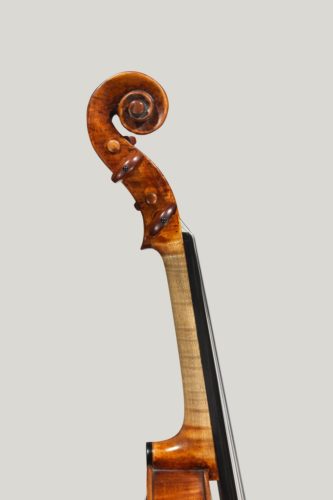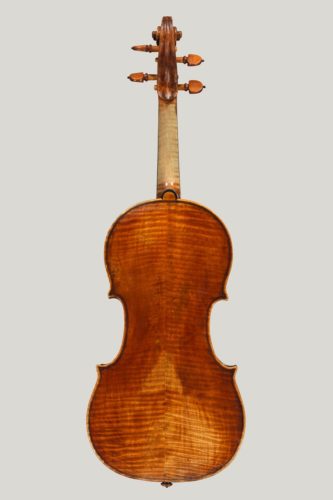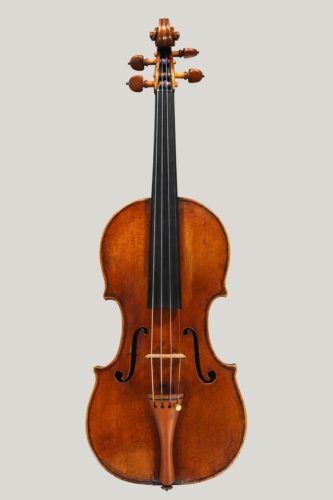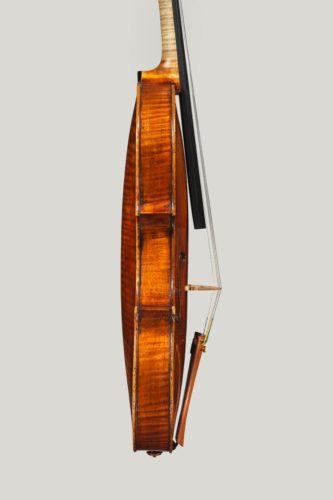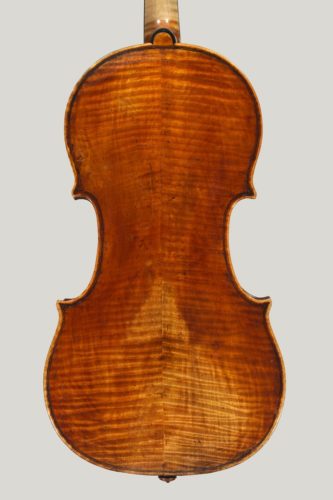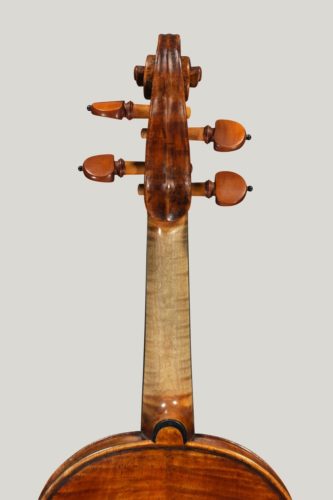Giuseppe Guarneri filius Andreæ
Violin made by Giuseppe Guarneri “filius Andreæ” in Cremona 1703. Geir Inge Lotsberg plays on this violin.
The Guarneri family was one of the most vital and influential dynasties of Cremona, but only “del Gesù”, the last of the line, can be said to have broken through to the very first rank. The founder, Andrea Guarneri, was a very able and prolific pupil of Nicolò Amati, but his craftsmanship never approached the sublime quality of his master.
Likewise, his son Giuseppe, known as “filius Andreæ”, created a wonderfully varied legacy of violins, violas and cellos which are always charming, and often very significant concert instruments. The tragedy for him was to have been working at the same time as Antonio Stradivari, whose consistent and prolific genius must have made professional life difficult for the Guarneris – difficult enough for Giuseppe’s older son Pietro to leave Cremona for Venice, and his younger son Giuseppe “del Gesù” to abandon violinmaking altogether for a brief period.
Giuseppe Guarneri “filius Andreæ” was born in 1666, the year that Stradivari’s first violins appeared. He worked as his father’s assistant alongside his elder brother, also called Pietro, who left to work in Mantua around 1680. When his father died in 1698, Giuseppe became the sole master of the shop. His eldest son Pietro was then only three years of age, and his second son Bartolomeo Giuseppe, later known as “del Gesù”, was born in that same year. At this point, the work of Giuseppe “filius Andreæ” was still very much based on the dominant Amati model, but like all his family, Giuseppe was an imaginative craftsman who developed many very personal touches in his instruments. His arching is instantly recognisable, with a slight pinched effect above the soundholes, which themselves became elegantly extended. What is interesting and significant is how quickly he then adopted Stradivari’s ideas at the beginning of the 18th century.
This violin, dated 1703 on its original label, already has some of the hallmarks of Stradivari’s work, although the dominant influence remains that of Nicolò Amati. The arching is very full, particularly on the back, in the style of Amati, yet the outline is a little stiffer and narrow in the manner of early Stradivari violins. The most striking aspect is the deeply coloured varnish. The red tint is rare in Cremonese instruments before this date and is generally seen as an innovation made by Stradivari around the end of the 17th century. The depth of the pigmentation on this Guarneri violin prefigures the stunning rich burgundy-red found on the greatest instruments of the following decades made by Stradivari, Guarneri del Gesù and Carlo Bergonzi.
The wood used is of good quality. The two-piece back shows a regular narrow flame descending slightly from the centre joint, with ribs of similar appearance. The scroll seems not to be original, although is very much in the Guarneri family style, and the pegbox has been replaced during restoration. The front is of the ususal composition of two matched pieces of flawless straight-grained alpine spruce.
The violin has certificates from J. & A. Beare of London and Max Möller of Amsterdam. Until recently it was in a Japanese collection, but was acquired for Dextra Musica by Peter Biddulph in 2007.
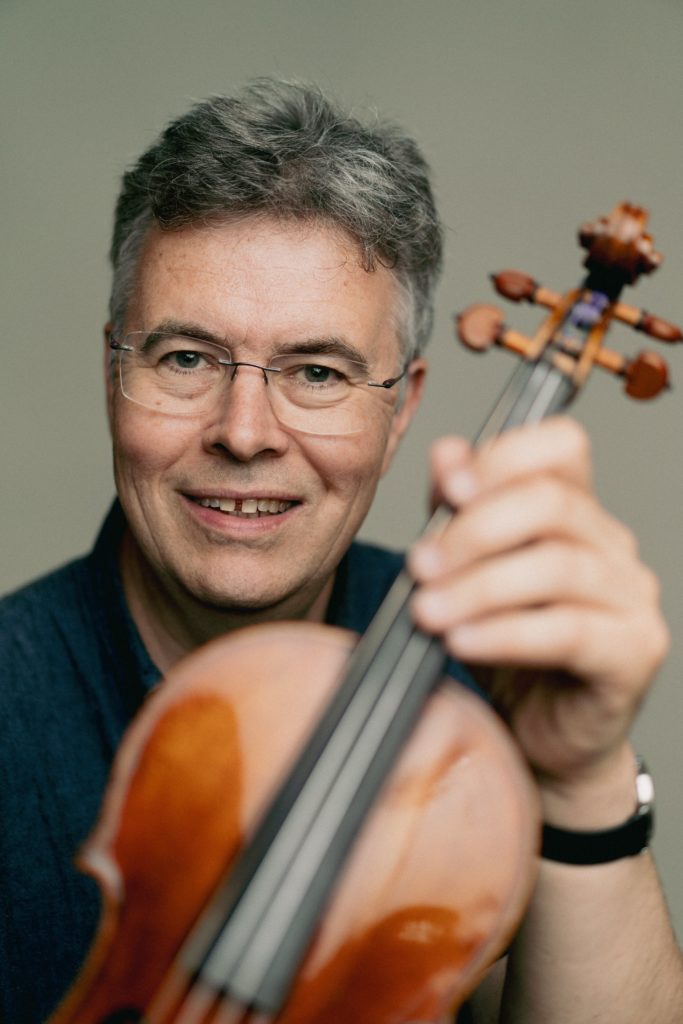
Geir Inge Lotsberg
Geir Inge Lotsberg is one of Norway’s most active chamber musicians. He has extensive experience from ensembles such as the Norwegian Chamber Orchestra, Camerata Academica Salzburg and as concertmaster in the Bergen Philharmonic Orchestra and the Norwegian Opera Orchestra.
